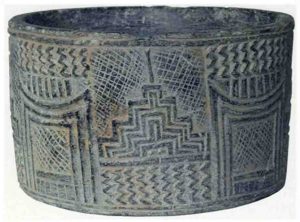The ziggurat of Jiroft, oldest and largest ziggurat in the word.
The ziggurat of Jiroft, which is known also as the Konar Sandal, is an ancient monument located in the southern Iranian province of Kerman in Jiroft, a place that some people believe is Iran’s cradle of civilization.
This ziggurat was discovered in 2002, and it is the second ziggurat to be found in Iran, the first being the Chogha Zanbil ziggurat in Susa. According to sources, the ziggurat of Jiroft is the largest and oldest structure of its kind in the world.
The word ziggurat may be translated as an ancient tower in the form of a pyramid and is a structure with a rectangular base which has smaller and smaller upper stories and a temple on top. ziggurats are mostly associated with the Mesopotamian civilization, which today approximately corresponds to most of Iraq and the eastern parts of Syria.
However, some of these enormous structures have also been found in the western part of Iran.
One of the basic ways of distinguishing between Mesopotamian and Iranian ziggurats is the way these structures were accessed by people and also structural architecture. For example, the structures were accessed by an external stair, On the other hand, the ziggurats in Iran were accessed by ramps.
The best-known ziggurat in Iran is Choga Zanbil, which is located in the southwestern Khuzestan province. It was discovered in 1936 and was registered in the UNESCO World Heritage List in 1979. It has been dated to 1250 B.C.
Two mounds (Tapeh in the Persian language) have been excavated in Jiroft.
The city located 230 km to the south of Kerman, the capital of the Kerman province.
These two mounds have been designated as sites A and B. The excavation of site B revealed a two-floor citadel with a base covering an area of 14 hectares. This structure was surrounded by a wall with 10.5 m in thickness. These findings prove that the structure had been a fortified building.
On the other hand at site A, a ziggurat-like structure, which consists of two levels, was uncovered. This structure was 17m height, and 300m in both length and width at the base, and also 150m on each side of the second level.
This structure in Jiroft dates to around 2200 B.C. By comparison, the oldest ziggurat in Mesopotamia, and the ziggurat of Ur is considered as having been built around 2100 B.C. Some have also believed that the ziggurat of Jiroft was built by the Aratta, who is mentioned as a legendary Bronze Age kingdom in Sumerian texts.
The exact location of this civilization is unclear. For instance, some scholars believe that Aratta was situated in Jiroft, others have suggested that this kingdom was located in Azerbaijan, Baluchistan or even on the Gulf.
The age of this structure has also been questioned. The dating of this monument has been specified base on two small fragments that written inscriptions. It appears that the Jiroft has many more secrets to reveal.
Share this post
Tripadvisor: Letsvisitpersia
WhatsApp :+989333020393
Telegram: Letsvisitpersia



Leave a Reply